The Best Fluffy Pancakes recipe you will fall in love with. Full of tips and tricks to help you make the best pancakes.
Have you ever wondered what makes Swiss Gipfeli recipe so irresistibly flaky and buttery? These delightful pastries, often compared to French croissants, are a staple of Swiss breakfast tables and bakeries. Whether you call them Gipfeli or Swiss croissants, one thing is certain: they’re a treat worth mastering at home.
In this Gipfeli recipe, we’ll guide you through the art of creating these golden, layered pastries from scratch. With just a handful of simple ingredients—like high-quality butter and flour—you can bring a taste of Switzerland to your kitchen. Perfect for breakfast, brunch, or a cozy afternoon snack, Gipfeli are as versatile as they are delicious.
So, are you ready to roll up your sleeves and bake something truly special? Let’s dive into the world of Gipfeli croissants and discover the secrets to making these heavenly pastries at home!
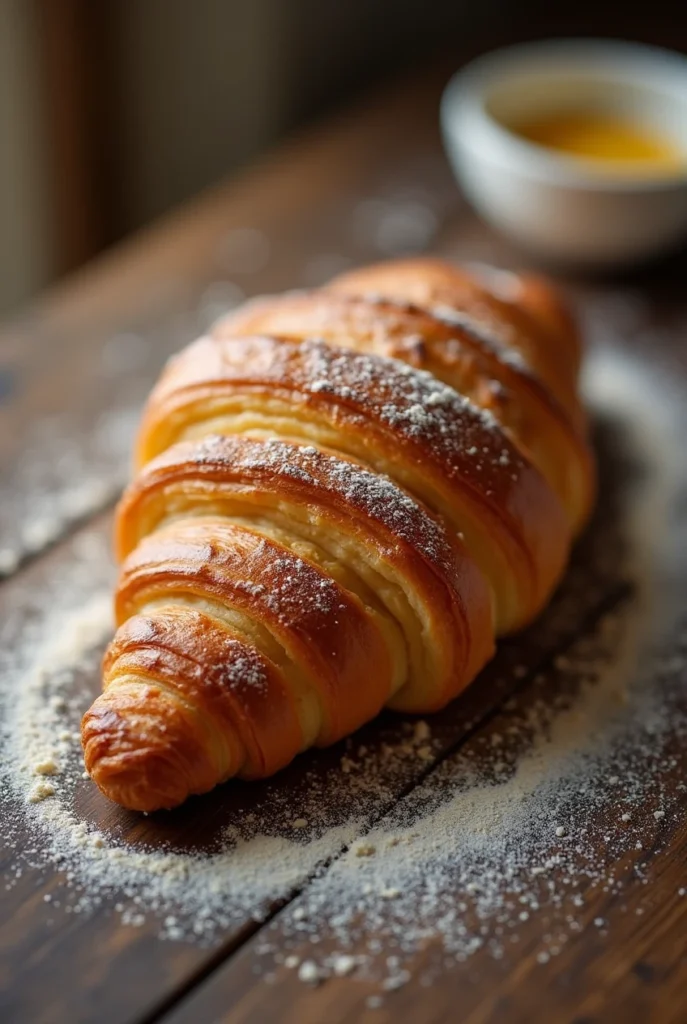
Table of Contents
- You May Also Like: Braided Chocolate Chip Brioche Recipe
What is the Difference Between a Croissant and a Gipfeli?

At first glance, Gipfeli recipe and croissants recipe might seem like twins—both are flaky, buttery pastries that make breakfast feel like a celebration. But dig a little deeper, and you’ll discover some delightful differences that set them apart.
Origins and Cultural Significance
- Croissants: These iconic pastries are synonymous with French cuisine, often enjoyed with a café au lait at a Parisian café. Their crescent shape is said to symbolize the Ottoman Empire’s flag, a nod to their (debated) Turkish origins.
- Gipfeli: Hailing from Switzerland, Gipfeli are the Swiss take on the croissant. They’re a beloved part of Swiss breakfast culture, often enjoyed with jam, butter, or even a slice of cheese.
Shape and Texture
- Croissants: Traditionally crescent-shaped, French croissants are known for their ultra-thin, delicate layers and a slightly crisp exterior.
- Gipfeli: While similar in texture, Gipfeli are often straighter in shape and may have a slightly denser, richer crumb. They’re equally flaky but tend to feel a bit heartier.
Ingredients and Flavor
- Both pastries rely on high-quality butter, flour, and yeast, but Gipfeli sometimes include a touch more sugar, giving them a subtly sweeter flavor compared to the more neutral taste of a classic croissant.
Why It Matters
Understanding these differences isn’t just trivia—it’s about appreciating the unique charm of each pastry. Whether you’re team croissant or team Gipfeli, both offer a buttery, flaky experience that’s hard to resist.
So, the next time you bite into a Gipfeli croissant, you’ll know you’re savoring a piece of Swiss tradition with its own special twist. Ready to make your own? Let’s move on to the ingredients!
- See Also: Banana Bread Recipe 2 Bananas
What Are the Ingredients in a Croissant?
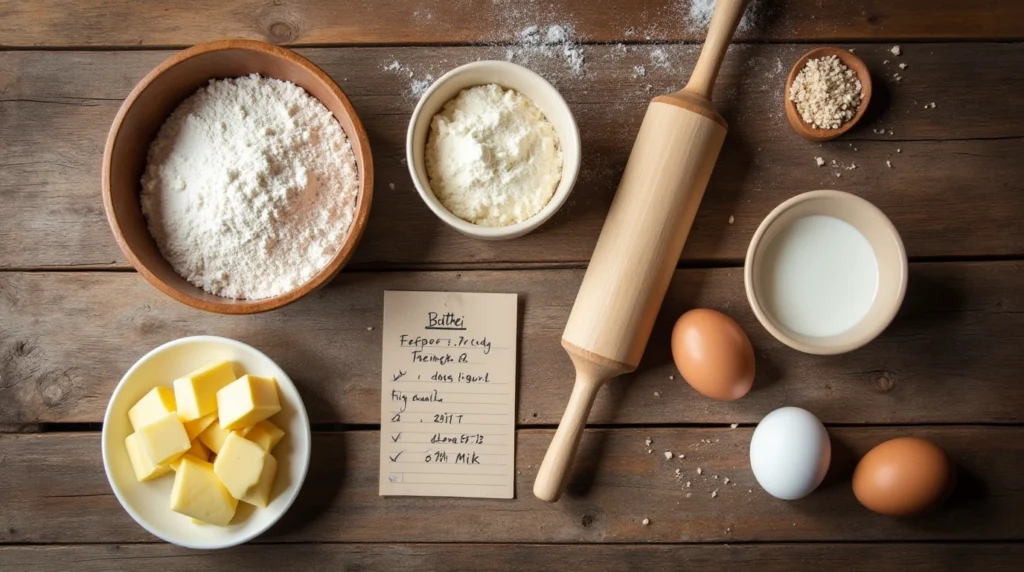
When it comes to making Gipfeli recipe —or any flaky, buttery pastry—the magic lies in the ingredients. While the list is simple, each component plays a crucial role in creating those irresistible layers. Here’s what you’ll need to make your own Swiss Gipfeli at home:
The Essential Ingredients
- Flour (500g):
- Use high-quality bread flour or all-purpose flour for the best texture. Bread flour gives the dough more structure, while all-purpose flour creates a slightly softer crumb.
- Butter (300g, divided):
- Unsalted, high-fat butter (preferably European-style) is key. You’ll use some for the dough and the rest for laminating (folding into layers).
- Milk (250ml):
- Whole milk adds richness and helps create a tender dough.
- Sugar (50g):
- A touch of sugar balances the flavor and aids in browning during baking.
- Salt (10g):
- Enhances the overall flavor and balances the sweetness.
- Yeast (10g, active dry or instant):
- The leavening agent that gives Gipfeli their light, airy texture.
- Egg (1, optional):
- Some recipes include an egg for added richness and color.
Why Quality Matters
- Butter: The star of the show! High-fat butter (82% or higher) ensures flaky layers and a rich flavor.
- Flour: Opt for a brand with a good protein content (11-13%) to achieve the perfect dough elasticity.
- Yeast: Fresh yeast works best, but instant yeast is a reliable alternative for convenience.
Pro Tips for Ingredient Prep
- Chill Your Butter: Cold butter is essential for laminating. If it melts too soon, your layers won’t be as distinct.
- Measure Accurately: Baking is a science, so use a kitchen scale for precision.
- Room Temperature Milk: Slightly warm milk (not hot) helps activate the yeast without killing it.
With these ingredients in hand, you’re ready to create the foundation for your Gipfeli croissants. Up next, we’ll walk through the step-by-step instructions to bring these pastries to life!
Instructions: How to Make Gipfeli recipe (Swiss Croissants)
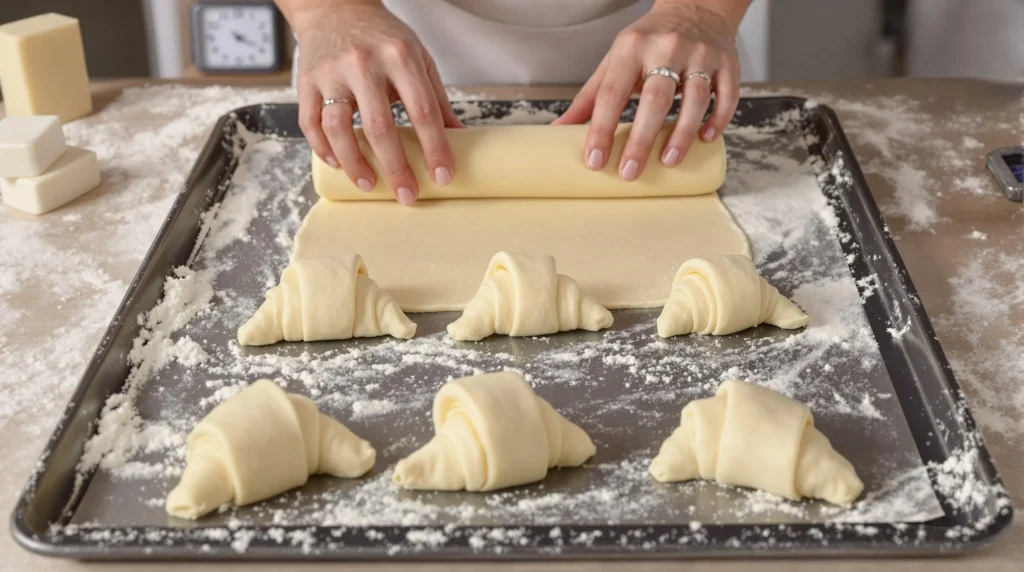
Ready to roll up your sleeves and create your own Gipfeli recipe? This step-by-step guide will walk you through the process, from mixing the dough to pulling golden, flaky pastries out of the oven. Don’t worry—it’s easier than you think, and the results are worth every minute!
Step 1: Prepare the Dough
- Activate the Yeast:
- In a small bowl, mix warm milk (about 37°C/98°F) with sugar and yeast. Let it sit for 5-10 minutes until frothy.
- Mix the Dough:
- In a large mixing bowl, combine flour and salt. Add the yeast mixture and mix until a rough dough forms.
- Knead the dough on a floured surface for 8-10 minutes until smooth and elastic.
- First Rise:
- Place the dough in a lightly oiled bowl, cover with a damp cloth, and let it rise in a warm place for 1-1.5 hours, or until doubled in size.
Step 2: Laminate the Dough
- Prepare the Butter Block:
- Place 250g of cold butter between two sheets of parchment paper. Use a rolling pin to flatten it into a rectangle (about 20x15cm). Chill until firm.
- Roll and Fold:
- Roll out the dough into a rectangle (about 30x20cm). Place the butter block in the center and fold the dough over it like an envelope.
- Roll the dough out again into a rectangle and fold it into thirds (like a letter). This is your first fold. Chill for 30 minutes.
- Repeat the Folding:
- Repeat the rolling and folding process two more times, chilling the dough for 30 minutes between each fold. This creates those beautiful, flaky layers.
Step 3: Shape the Gipfeli
- Cut the Dough:
- Roll the dough into a large rectangle (about 40x30cm). Cut it into long triangles (about 12cm wide at the base).
- Roll into Crescents:
- Starting at the base of each triangle, gently roll the dough toward the tip. Curve the ends slightly to create the classic crescent shape.
- Second Rise:
- Place the shaped Gipfeli on a baking sheet lined with parchment paper. Cover lightly and let them rise for 45-60 minutes, or until puffy.
Step 4: Bake to Perfection
- Preheat the Oven:
- Heat your oven to 200°C (390°F).
- Egg Wash (Optional):
- For a shiny, golden finish, brush the Gipfeli with a beaten egg mixed with a splash of milk.
- Bake:
- Bake for 15-20 minutes, or until the Gipfeli are golden brown and flaky.
- Cool and Enjoy:
- Let them cool slightly on a wire rack before serving.
Pro Tips for Success
- Keep It Cold: If the dough gets too warm during rolling, chill it for 15-20 minutes to prevent the butter from melting.
- Don’t Rush the Rise: Patience is key! Proper rising ensures light, airy pastries.
- Experiment with Fillings: Add a sprinkle of chocolate, almond paste, or jam before rolling for a fun twist.
And there you have it—homemade Gipfeli croissants that rival any Swiss bakery! Serve them warm with your favorite spread, and enjoy the fruits of your labor.
- Don’t Miss This Recipe: Homemade Hotcake Mix Recipe Perfect Pancakes
What is the Secret to a Good Croissant?
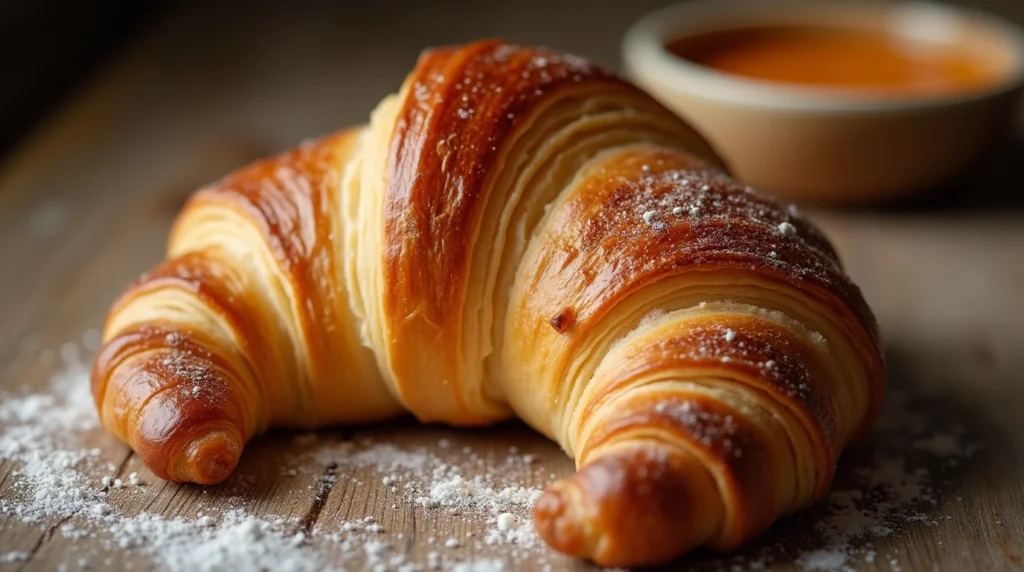
Creating the perfect Gipfeli recipe—or any flaky, buttery pastry—is part science, part art. While the recipe itself is straightforward, the magic lies in the details. Here are the secrets to achieving bakery-quality Swiss Gipfeli at home:
1. Quality Ingredients Matter
- Butter: Use high-fat, unsalted butter (preferably European-style) for the best flavor and texture. The butter’s moisture content helps create steam during baking, which lifts those beautiful layers.
- Flour: Opt for bread flour or high-protein all-purpose flour. The extra gluten strength ensures your dough can handle the lamination process without tearing.
2. Master the Lamination Process
- Keep It Cold: The key to flaky layers is keeping the butter cold. If it melts too soon, the layers will blend together, resulting in a denser pastry. Chill the dough between folds and work quickly.
- Even Rolling: Roll the dough evenly to ensure consistent layers. Uneven rolling can lead to some parts being thicker than others, affecting the final texture.
3. Patience is Key
- Proper Rising: Don’t rush the proofing process. Let the dough rise until it’s visibly puffy and doubled in size. This ensures a light, airy crumb.
- Resting Time: Chill the dough between folds and before shaping. This relaxes the gluten and makes the dough easier to work with.
4. Precision in Shaping
- Sharp Cuts: Use a sharp knife or pizza cutter to cut the dough into triangles. Clean cuts help the layers rise evenly during baking.
- Tight Rolling: Roll the triangles firmly but gently, starting from the base to the tip. Avoid pressing too hard, as this can squeeze out the layers.
5. Bake with Care
- Preheat the Oven: A hot oven (200°C/390°F) is essential for creating steam, which lifts the layers and gives Gipfeli their signature flakiness.
- Egg Wash: For a glossy, golden finish, brush the pastries with an egg wash before baking. It’s a small step that makes a big difference.
6. Avoid Common Mistakes
- Overworking the Dough: Too much kneading or rolling can toughen the dough. Handle it gently to preserve the delicate layers.
- Skipping the Chill Time: Rushing the chilling steps can lead to butter leakage and uneven layers. Patience pays off!
- Underproofing: If the shaped Gipfeli don’t rise enough before baking, they’ll be dense instead of light and airy.
7. Practice Makes Perfect
Even professional bakers didn’t master croissants overnight. Don’t be discouraged if your first batch isn’t perfect—each attempt brings you closer to flaky, buttery perfection.
By following these tips, you’ll unlock the secrets to making Gipfeli croissants that are crisp on the outside, tender on the inside, and utterly irresistible. Ready to serve them up? Let’s move on to some delicious serving suggestions!
- Further Reading: Easy Rockfish Recipe best way to cook rockfish
Serving Suggestions: How to Enjoy Your Gipfeli

Freshly baked Gipfeli recipe are a treat on their own, but why stop there? Here are some delightful ways to serve and enjoy your homemade Swiss Gipfeli recipe, whether you’re hosting a brunch, enjoying a quiet breakfast, or indulging in an afternoon snack.
1. Classic Pairings
- Butter and Jam: Spread a layer of creamy butter and your favorite jam (apricot or raspberry work beautifully) for a simple yet satisfying treat.
- Chocolate Spread: For a decadent twist, fill your Gipfeli with Nutella or another chocolate-hazelnut spread.
- Cheese and Ham: Add a slice of Swiss cheese and ham for a savory option that’s perfect for breakfast or lunch.
2. Elevate Your Brunch Spread
- Pastry Platter: Arrange Gipfeli on a platter with other pastries like muffins, scones, and Danish for a stunning brunch display.
- Fruit Salad: Serve alongside a fresh fruit salad for a light, refreshing contrast to the rich, buttery pastries.
- Yogurt Parfaits: Pair with yogurt parfaits layered with granola and berries for a balanced breakfast.
3. Coffee and Tea Pairings
- Coffee: A freshly brewed cup of coffee, whether it’s an espresso, cappuccino, or latte, complements the buttery richness of Gipfeli perfectly.
- Tea: Opt for a black tea like Earl Grey or a herbal tea like chamomile for a cozy, comforting combination.
4. Creative Variations
- Almond Gipfeli: Brush baked Gipfeli with a simple syrup and sprinkle with sliced almonds for a crunchy, sweet topping.
- Chocolate-Filled: Tuck a piece of dark chocolate into the dough before rolling for a gooey, indulgent surprise.
- Savory Twist: Add herbs like thyme or rosemary to the dough, or sprinkle with grated Parmesan before baking for a savory version.
5. Storage and Reheating Tips
- Freshness: Gipfeli are best enjoyed the day they’re baked, but you can store them in an airtight container for up to 2 days.
- Reheating: To revive their flakiness, warm them in a 180°C (350°F) oven for 5-7 minutes. Avoid the microwave, as it can make them soggy.
- Freezing: Freeze unbaked Gipfeli on a baking sheet, then transfer to a freezer bag. Bake straight from frozen, adding a few extra minutes to the baking time.
6. Make It Special
- Brunch Party: Serve Gipfeli as part of a DIY pastry bar with assorted spreads, fruits, and toppings for guests to customize their own.
- Gift Idea: Wrap a few Gipfeli in parchment paper and tie with a ribbon for a thoughtful homemade gift.
Whether you enjoy them plain or dressed up, Gipfeli croissants are a versatile pastry that can be tailored to any occasion. So, grab a cup of coffee, take a bite, and savor the flaky, buttery goodness of your homemade creation!
- Recommended For You: Homemade Salmon Asian Rub Recipe
Conclusion: Mastering the Art of Gipfeli recipe
Congratulations! You’ve just embarked on a delicious journey to create your very own Gipfeli recipe —a pastry that’s as rewarding to make as it is to eat. Whether you’re a seasoned baker or a first-time pastry enthusiast, mastering this Swiss Gipfeli recipe is a accomplishment worth celebrating.
Why Gipfeli Are Worth the Effort
- Homemade Goodness: There’s something incredibly satisfying about pulling a tray of golden, flaky pastries out of your own oven.
- Versatility: From sweet to savory, Gipfeli can be customized to suit any taste or occasion.
- A Taste of Tradition: By making Gipfeli recipe at home, you’re keeping a piece of Swiss culinary heritage alive.
A Few Final Tips
- Practice Makes Perfect: Don’t be discouraged if your first batch isn’t flawless. Each attempt brings you closer to mastering the art of lamination and baking.
- Share the Love: Gipfeli are best enjoyed fresh, so invite friends or family over to share in the joy of your baking success.
- Experiment: Once you’ve nailed the basic recipe, try adding your own twists—whether it’s a new filling, a different shape, or a unique topping.
Your Next Steps
Now that you’ve learned the secrets to making Gipfeli croissants, it’s time to put your skills to the test. Gather your ingredients, clear your countertop, and let the aroma of buttery, flaky pastries fill your kitchen.
And remember, baking is as much about the process as it is about the result. So, take your time, enjoy the journey, and savor every bite of your homemade Gipfeli recipe.
We’d love to hear how your Gipfeli recipe turned out! Share your creations, tips, or questions in the comments below. Happy baking!
- Suggested Reading: 18th Century Queens Cake recipe
AQs: Your Gipfeli recipe Questions Answered
Got questions about making Gipfeli? You’re not alone! Here are answers to some of the most common questions about these delightful Swiss pastries. Whether you’re curious about ingredients, techniques, or history, we’ve got you covered.
Are Croissants French or Turkish?
Croissants are widely associated with French cuisine, but their origins are debated. Some believe they were inspired by the Austrian kipferl, while others trace their roots to Turkish pastries. Regardless, the French perfected the flaky, buttery version we know and love today.
What Do Italians Call Croissants?
In Italy, croissants are called cornetti. They’re often sweeter than French croissants and may be filled with jam, cream, or chocolate.
What is the Rule for Croissant?
The golden rule for croissants (and Gipfeli) is cold butter and patience. Keeping the butter cold ensures distinct layers, while proper resting and proofing times guarantee a light, airy texture.
How Many Layers of Butter Should a Croissant Have?
A well-made croissant or Gipfeli typically has 27 layers of dough and butter. This is achieved through a series of folds (usually three folds of three layers each).
Why Do Croissants Not Rise?
If your croissants or Gipfeli don’t rise, it could be due to:
Overproofing or underproofing: Ensure the dough rises until puffy but not collapsed.
Butter leakage: If the butter melts too soon, it can weigh down the layers.
Old yeast: Always use fresh yeast for the best results.
Will There Be Egg in Croissant?
Some croissant recipes include an egg in the dough for richness, but it’s not mandatory. For Gipfeli, eggs are optional and often used only in the egg wash for a golden finish.
Why Are Croissants So Nice?
Croissants (and Gipfeli) are irresistible because of their flaky layers, buttery flavor, and light, airy texture. They’re the perfect balance of indulgence and craftsmanship.
What is the Scottish Version of a Croissant?
The Scottish version of a croissant is called a “buttery” or “rowie.” It’s a flaky, savory pastry made with butter and lard, often enjoyed as a breakfast treat.
What is Gipfeli?
Gipfeli is the Swiss version of a croissant. It’s slightly straighter in shape and often has a richer, denser crumb compared to its French counterpart.
Should Croissants Have Eggs?
Eggs are optional in croissant dough but are commonly used in the egg wash for a shiny, golden crust. For Gipfeli, eggs can add richness to the dough but aren’t essential.
What is the Best Flour for Croissants?
The best flour for croissants and Gipfeli is bread flour or high-protein all-purpose flour (11-13% protein). This ensures the dough has enough strength to hold the layers.
Is Croissant Eaten by Hand or Fork?
Croissants and Gipfeli are typically eaten by hand, making them perfect for on-the-go breakfasts or casual snacking.
Are Croissants Just Puff Pastry?
While both are layered pastries, croissants (and Gipfeli) are made with yeasted dough, giving them a lighter, airier texture compared to puff pastry.
What is a Mistake When Making Croissants?
A common mistake is rushing the process. Skipping chilling times, underproofing, or overworking the dough can lead to dense, uneven pastries. Patience is key!
What Kind of Butter is Best for Croissants?
Use high-fat, unsalted butter (82% fat or higher) for the best results. European-style butter is ideal for its rich flavor and creamy texture.
Are Croissants Very Unhealthy?
Croissants and Gipfeli are indulgent treats due to their butter content, but enjoyed in moderation, they can be part of a balanced diet. Pair them with fresh fruit or yogurt for a more balanced meal.
Still have questions? Feel free to ask in the comments below—we’re here to help you master the art of Gipfeli croissants!

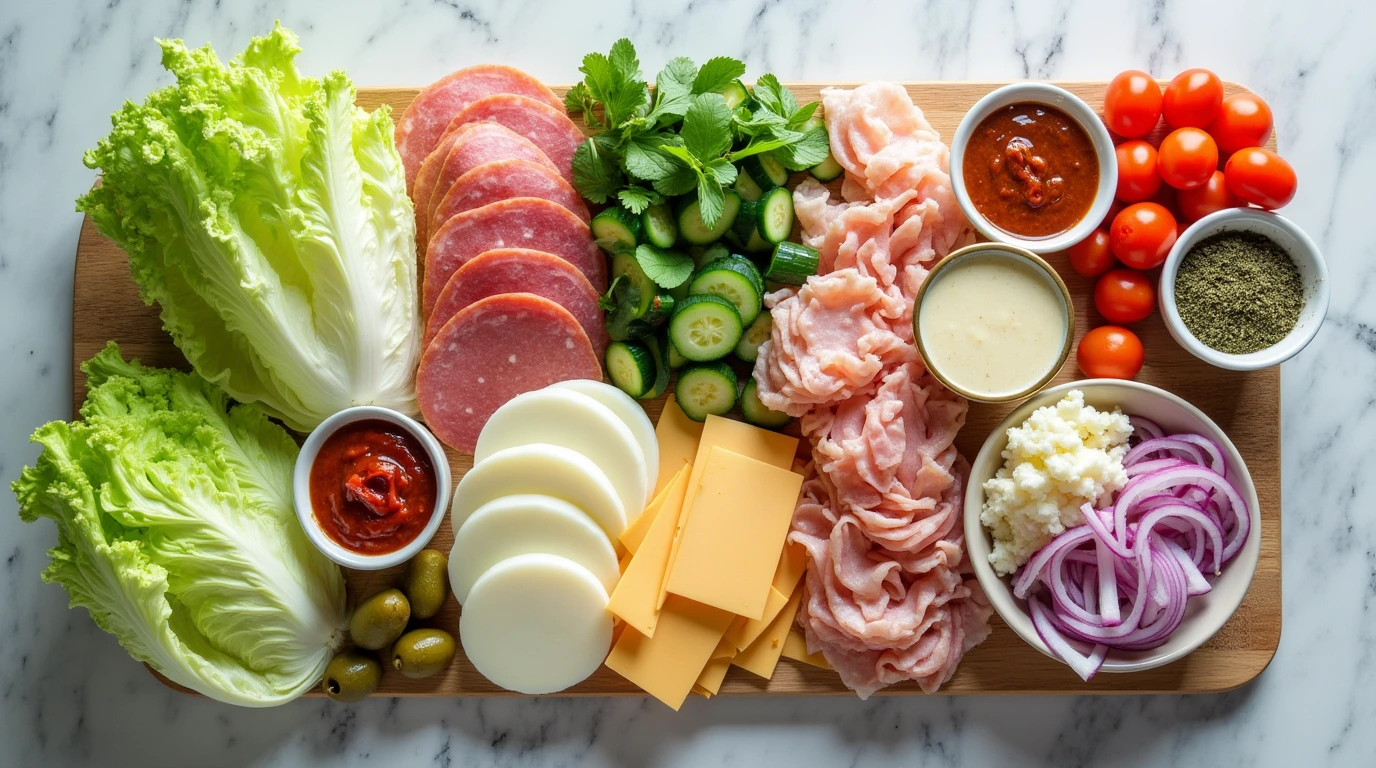

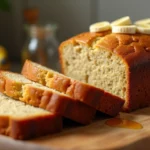


[…] Let’s dive into the ingredients—the building blocks of your sub in a tub recipe. This is where the magic begins, and trust me, it’s all about fresh, flavorful choices that make this dish shine [[1]]. I’ll guide you through each layer with tips and ideas to help you create something truly delicious. READ ALSO: Gipfeli Recipe […]
[…] Gipfeli Recipe How to Make Swiss Croissants […]